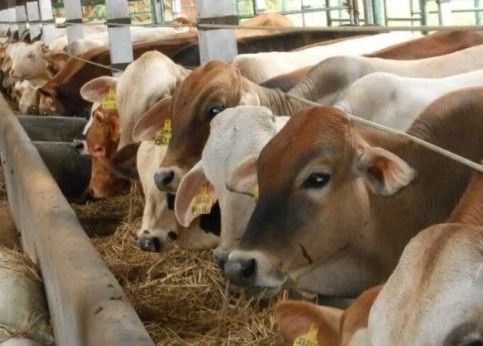Exploring Agricultural Innovation, Cultivating the Future
Agricultural Innovation From the first sharpened stick used for digging to the modern marvels of vertical farms, agriculture has always been driven by innovation. As we face a future marked by growing populations, climate change, and resource scarcity, the need for agricultural innovation is more urgent than ever.
What is Agricultural Innovation Innovation?
Broadly, agricultural innovation refers to the introduction of new ideas, technologies, or practices that improve the efficiency, sustainability, and resilience of agricultural systems. It can encompass a wide range of areas, including:
Plant and animal breeding: Developing crops and livestock varieties that are more resistant to diseases, pests, and climate stress, while also offering improved yields and nutritional value.
Precision agriculture: Utilizing sensors, data analytics, and automation to optimize resource use, such as water and fertilizer, leading to increased productivity and minimized environmental impact.
Vertical farming: Growing crops in stacked layers indoors, under controlled conditions, offering year-round production and reduced reliance on land and water.
Agroecology: Integrating ecological principles into farming practices to promote biodiversity, soil health, and natural pest control.
Digital agriculture: Leveraging digital technologies like blockchain and artificial intelligence for farm management, logistics, and market access.
Why is Agricultural Innovation Important?
The challenges facing agriculture are multifaceted:
Food security: With a growing global population, feeding everyone nutritious food requires increased production while using fewer resources.
Climate change: Rising temperatures, erratic weather patterns, and water scarcity threaten agricultural yields and farmer livelihoods.
Sustainability: Current agricultural practices can contribute to deforestation, soil degradation, and water pollution.
Economic viability: Small-scale farmers often struggle with low income and market access, hindering their ability to invest in innovation.
Agricultural innovation holds the key to addressing these challenges:
Boosting productivity: New technologies and practices can help farmers produce more food on less land and with fewer resources.
Enhancing resilience: Climate-smart agriculture can help farmers adapt to changing weather patterns and mitigate the impacts of climate change.
Promoting sustainability: Eco-friendly practices can reduce agriculture’s environmental footprint and conserve precious resources.
Empowering farmers: Digital tools and improved market access can connect farmers to wider markets and improve their income.
Examples of Agricultural Innovation in Action:
Drones: These are used for crop monitoring, spraying pesticides, and collecting data, leading to more efficient resource use and targeted interventions.
Gene editing: Scientists are developing crops with desirable traits like drought resistance or enhanced nutrition, although ethical considerations remain.
Vertical farms: These are gaining traction, particularly in urban areas, offering sustainable and local food production.
Biofertilizers: These naturally occurring microbial inoculants can improve soil health and nutrient uptake, reducing reliance on chemical fertilizers.
Community-supported agriculture (CSA): This model connects farmers directly with consumers, creating a fairer and more sustainable food system.
Challenges and Opportunities:
Despite its potential, agricultural innovation faces certain challenges:
Access: Small-scale farmers often lack the financial resources and infrastructure to adopt new technologies.
Knowledge gap: Effective extension services are crucial to bridge the gap between research and application.
Policy and regulations: Regulatory frameworks may need to adapt to facilitate and encourage innovation.
Public perception: Concerns regarding genetically modified organisms (GMOs) and other advanced technologies require open dialogue and education.
Despite these challenges, numerous opportunities exist to accelerate agricultural innovation:
Public-private partnerships: Collaboration between governments, research institutions, and businesses can foster innovation and facilitate its adoption.
Investment in research and development: Increased funding for agricultural research is crucial to unlock the potential of new technologies.
Farmer education and training: Equipping farmers with the knowledge and skills to use new technologies effectively is essential.
Supporting local innovation: Encouraging and nurturing grassroots innovations developed by farmers themselves can be highly impactful.
Conclusion Agricultural Innovation:
Agricultural innovation is not just about producing more food; it’s about building a more sustainable, resilient, and equitable food system for the future. By embracing innovation and addressing the challenges, we can cultivate a future where everyone has access to healthy and nutritious food, and farmers thrive in a healthy environment. The journey towards this future requires collaboration, investment, and a commitment to explore the potential of innovation for the benefit of all. Let’s cultivate a future where innovation blossoms, nourishing not just our plates, but also our planet and its people.





